Australia is preparing for new trade talks with the European Union (EU) in the wake of the United States’ new tariff regime. The prospect of a Free Trade Agreement (FTA) comes two years after negotiations between the two parties collapsed over European access to Australia’s agriculture.
This is just one issue that goes into the mix when Australian importers and exporters weigh up the pros and cons of doing business with countries like Germany, Italy, the Netherlands and the United Kingdom (UK) – which of course is out of the EU, but still part of the geographical region.
There is major congestion at European container terminals which is forecast to last well into the north-hemisphere summer, with almost all ports across Northern Europe having to deal with the issues of container line schedule reliability. Germany, the Netherlands, and the UK are all reportedly contending with container backlogs, prompted by vessel diversions from continental ports.
The Red Sea crisis, which has been going on since late 2023, continues to cause significant disruptions to global shipping, leading to longer transit times and higher shipping costs. Houthi attacks on commercial vessels passing through the maritime corridor have disrupted this key shipping route connecting Europe with the rest of the world. Ships are rerouted around the Cape of Good Hope, adding thousands of nautical miles to voyages.
The EU is Australia’s third-largest trading partner, accounting for AUD 60.9 billion (8.7%) of Australia’s total goods trade. 15.8% of Australian goods imports, worth AUD 48.7 billion, were from the EU (second after China), while 3.1% of Australia’s goods exports, worth AUD 12.2 billion, were destined for the EU; making it Australia’s eighth-biggest customer for goods.
Recognising the importance of the EU as a trading partner for Australia sometimes gets blurred because of the tendency for formal statistics to separate out the EU’s Member States and report their trade figures separately. Goods exported from Australia into any one member state are effectively entering all 27 as internal movement is unrestricted. On this basis, the EU is Australia’s third-most important goods and services trading partner after China and Japan.
On an individual basis, Germany rates as our 11th most important two-way partner for goods and services (the UK, no longer a member of the EU, is 12th). The Netherlands is our 15th destination for exports, while Germany is our 6th most important source of imports, and Italy comes in at 15th for imports.
Major Australian exports to the EU include gold, coal, and oil seeds. Major imports from the EU to Australia include passenger motor vehicles, medicaments, and pharmaceutical products.
While negotiations for an FTA have been ongoing, they have faced some challenges, including suspension of talks in 2023. Overall, the trade relationship between Australia and the EU is substantial and complex, with huge potential for further growth once a trade agreement has been signed.
If you are considering importing or exporting, to or from anywhere in Europe – or the UK – by air or sea, contact us here at Colless Young. Talk to Andrew, Tel: +61 7 3890 0800 email enq@collessyoung.com.au.

